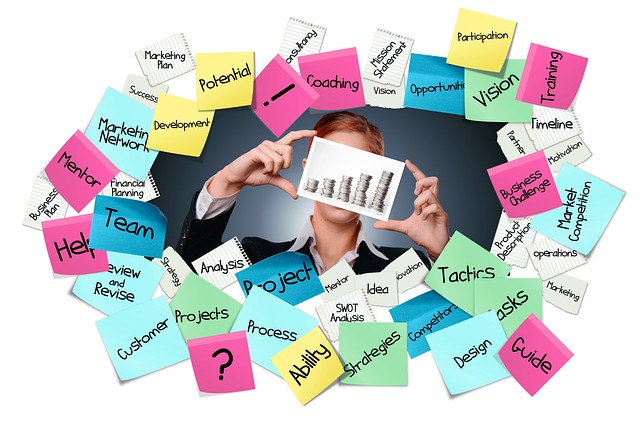Invisible Business Model: The Ultimate Edge in Enterprise Valuation
When it comes to building a business that stands the test of time, many entrepreneurs focus on profits alone. While profitability is important, the world’s most successful founders play a different game — a valuation game. They leverage Invisible Business Models (IBMs) to achieve enterprise valuations that are 100 times their revenue, creating life-changing opportunities for themselves and their investors.

What is Enterprise Valuation and Why Does it Matter?
Enterprise valuation reflects the monetary worth of a company in the eyes of investors. It is not limited to profitability but encompasses potential, scalability, and innovation. Mastering this game is essential for entrepreneurs aiming to attract big investors or create a life-changing exit.
Some of the biggest companies in the world, such as Grab, Shopee, and Tesla, have demonstrated this principle by achieving staggering valuations despite being loss-making for years before turning profitable. Their ability to maintain investor confidence hinges on their well-designed business models.
The Valuation Game: Profits vs. Value
Many entrepreneurs are stuck playing the profit-and-loss game, believing that profitability is the sole metric for a valuable company. However, real-world examples challenge this mindset. The valuation game shifts the focus toward building scalable, resilient frameworks that increase both profits and enterprise value simultaneously.
Imagine actions you take in your business having a double effect, increasing both your company’s profits and its valuation. This is exactly what every successful multinational corporation knows how to do, creating value not just for customers but for stakeholders and investors alike.
Introducing the Invisible Business Model
The Invisible Business Model is the key to winning the valuation game. Unlike traditional business strategies that focus solely on visible operations — products, services, or branding, an IBM operates in the background, driving growth and scalability through hidden frameworks and systems.
One powerful example is 7-Eleven, which appears to be a convenience store chain on the surface. However, behind the scenes, it functions as a logistics, marketing, financing, and franchising powerhouse. Its ability to generate multiple revenue streams from supplier fees, consignment terms, advertising fees, and franchising demonstrates the transformative power of IBMs.
The Difference Between Traditional and Dominant Business Models
Not all business models are created equal. To understand IBMs, it’s important to distinguish between traditional and dominant business models.
A traditional business model, like a sari-sari store (local convenience stall), focuses on simple transactions — buying products and selling them for a markup. In contrast, a dominant business model combines visible operations with invisible strategies, creating multiple revenue streams and operational efficiencies.
For example:
A sari-sari store buys and sells products with limited scalability.
7-Eleven generates revenue through shelf-space rental, delivery fees, consignment terms, and franchising, creating a dominant business model that investors find irresistible.
5 Characteristics of an Invisible Business Model
Designing an Invisible Business Model requires careful thought and strategy. It must fulfill certain key characteristics to ensure its success:
- Complementary: An IBM must work alongside your existing business model.
- Diversified: It should expand into a different industry, offering resilience against market fluctuations.
- Achievable: It must align with your current skill set and resources, ensuring feasibility.
- Multiplicative Impact: It should provide the feeling of “1 + 1 = 3,” achieving multiple outcomes with single actions.
- Scalable: Over time, it must become more valuable and profitable than your primary business.
If any of these characteristics are missing, the Invisible Business Model risks failure, emphasizing the importance of strategic design and execution.
Examples of IBMs
IBMs can be found in the world’s most successful companies, where they quietly drive profitability, scalability and investability:
McDonald’s: Known for burgers but thriving in the real estate sector. By purchasing property around franchise locations, McDonald’s increases property values and generates significant revenue through rentals and sales.
Apple: A technology company at its core, but its Invisible Business Model includes proprietary ecosystems such as App Store commissions and subscription services.
Kentucky’s Fried Chicken: Combines supply chain mastery, franchising expertise, and proprietary processes to create a scalable and resilient system that drives global success beyond selling fried chicken.
Each of these companies demonstrates how IBMs operate in parallel to visible business models, creating layers of value that competitors struggle to replicate.

Safeguarding Your Invisible Business Model
One critical aspect of an Invisible Business Model is confidentiality. Unlike visible operations, IBMs must remain protected, known only to key partners and stakeholders. Revealing too much can erode your competitive edge, as competitors may attempt to emulate your strategies.
Why Not Every Business Can Develop an Invisible Business Model
While IBMs are powerful, they are not suitable for every company. Businesses without a solid foundation of profitability, scalability, and investability should first establish a strong base using the PSI Framework before venturing into invisible models. For those ready to expand aggressively and attract large investors, IBMs offer an unmatched edge in enterprise valuation.
Conclusion
The Invisible Business Model is a revolutionary approach to creating sustainable growth and exceptional enterprise valuation. By combining the visible operations of a traditional business with hidden frameworks, IBMs enable entrepreneurs to win at both the profit-and-valuation game simultaneously.
From multinational giants like 7-Eleven and McDonald’s to growing brands like Pickup Coffee, IBMs demonstrate how powerful hidden strategies can be. If you’re ready to explore this transformative concept, ensure your business has a solid foundation and safeguard your proprietary knowledge to maximize its potential.
Are you ready to elevate your business and unlock the power of IBMs? At Art of Franchising, we specialize in helping entrepreneurs design scalable, resilient frameworks that drive profits and valuation. Contact us today to discover how you can build a stronger foundation and take your business to the next level!
